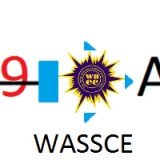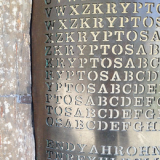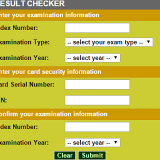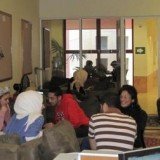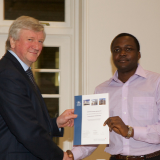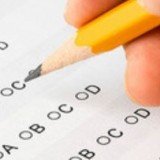The SAT I is now scored out of 1600 (the old SAT was out of 2400), and constitutes of 2 main sections: reading/writing and math. Each of this section is scored out of 800, and they are added together to get the overall score.
The SAT syllabus for different subjects is released by the College board, an organization that owns and administers the SAT. The SAT Syllabus contains a detailed outline of topics prospective SAT takers should cover before they write the test.
SAT Reading Test Syllabus
The Reading Test focuses on the skills and knowledge that you’ve been taught in high school or what you’d need to excel in college.
It focuses more on how you take in, process, and use information.
You don’t need to use any flashcards, or spend all night cramming as this doesn’t test how well you memorize facts and definitions, but how well you can:
- Identify how authors use evidence to support their claims.
- Find evidence in a passage or pair of passages that best supports the answer to a previous question or serves as the basis for a reasonable conclusion.
- Find a relationship between an informational graphic and the passage it’s paired with.
- Use context clues in a passage to figure out which meaning of a word or phrase is being used.
- Decide how an author’s word choice shapes meaning, style, and tone.
- Examine hypotheses.
- Interpret data.
- Consider implications.
Quick notes
- All Reading Test questions are multiple choice and based on passages.
- Some passages are paired with other passages.
- Informational graphics, such as tables, graphs, and charts, accompany some passages-but no math is required.
- Prior topic-specific knowledge is never tested.
- The Reading Test is part of the Evidence-Based Reading and Writing section.
SAT Writing and Language Test Syllabus
The SAT Writing and Language Test require you to be improve passages that were written especially for the test. These pages include deliberate errors, so as an editor you’re meant to:
- Read.
- Find mistakes and weaknesses.
- Fix them.
The passages you improve will range from arguments to nonfiction narratives and will be about careers, history, social studies, the humanities, and science.
Quick notes
- All questions are multiple choice and based on passages.
- Some passages are accompanied by informational graphics, such as tables, graphs, and charts-but no math is required.
- Prior topic knowledge is never tested.
- The Writing and Language Test is part of the Evidence-Based Reading and Writing section.
SAT Math Test Syllabus
The new SAT doesn’t test you in every math topic but on those you’d need most in all sorts of situations such as:
- College math, science, and social science courses
- The jobs that you hold.
- Your personal life.
Quick notes
- Most math questions will be multiple choice, but some-called grid-ins-ask you to come up with the answer rather than select the answer.
- The Math Test is divided into two portions: Math Test—Calculator and Math Test—No Calculator.
- Some parts of the test include several questions about a single scenario.
Topics covered on the SAT Math Test:
Heart of Algebra
Questions in this section tests your mastery of linear equations and systems.
You should be able to:
- Create, solve, or interpret a linear expression or equation in one variable that represents a context.
- Create, solve, or interpret linear inequalities in one variable that represent a context.
- Build a linear function that models a linear relationship between two quantities.
- Create, solve, and interpret systems of linear inequalities in two variables.
- Create, solve, and interpret systems of two linear equations in two variables.
- Algebraically solve linear equations (or inequalities) in one variable.
- Algebraically solve systems of two linear equations in two variables.
- Interpret the variables and constants in expressions for linear functions within the context presented.
- Understand connections between algebraic and graphical representations.
Problem Solving and Data Analysis
This tests your ability to create a representation of a problem, consider the units involved, attend to the meaning of quantities, and know and use different properties of operations and objects.
To excel in this section, you should be able to
- Use ratios, rates, proportional relationships, and scale drawings to solve single- and multistep problems.
- Solve single- and multistep problems involving percentages.
- Solve single- and multistep problems involving measurement quantities, units, and unit conversion.
- Given a scatterplot, use linear, quadratic, or exponential models to describe how the variables are related.
- Use the relationship between two variables to investigate key features of the graph.
- Compare linear growth with exponential growth.
- Use two-way tables to summarize categorical data and relative frequencies, and calculate conditional probability.
- Make inferences about population parameters based on sample data.
- Use statistics to investigate measures of center of data and analyze shape, center, and spread.
- Evaluate reports to make inferences, justify conclusions, and determine appropriateness of data collection methods.
Passport to Advanced Math
This tests you on topics that are especially important for students to master before studying advanced math.
To excel in this section, you should be able to:
- Create a quadratic or exponential function or equation that models a context.
- Determine the most suitable form of an expression or equation to reveal a particular trait, given a context.
- Create equivalent expressions involving rational exponents and radicals, including simplifying or rewriting in other forms.
- Create an equivalent form of an algebraic expression by using structure and fluency with operations.
- Solve a quadratic equation having rational coefficients.
- Add, subtract, and multiply polynomial expressions and simplify the result. The expressions will have rational coefficients.
- Solve an equation in one variable that contains radicals or contains the variable in the denominator of a fraction. The equation will have rational coefficients, and the student may be required to identify when a resulting solution is extraneous.
- Solve a system of one linear equation and one quadratic equation. The equations will have rational coefficients.
- Rewrite simple rational expressions.
- Interpret parts of nonlinear expressions in terms of their context.
- Understand the relationship between zeros and factors of polynomials, and use that knowledge to sketch graphs.
- Understand a nonlinear relationship between two variables by making connections between their algebraic and graphical representations.
- Use function notation, and interpret statements using function notation.
- Use structure to isolate or identify a quantity of interest in an expression or isolate a quantity of interest in an equation.
SAT Essay Syllabus
This optional test asks you to analyse a text. You’re required to:
- Read a passage.
- Explain how the author builds an argument to persuade an audience.
- Support your explanation with evidence from the passage.
Quick notes
- It’s optional-but some schools will require it. Get College SAT Essay policies.
- You have 50 minutes to complete your essay, 25 minutes more than the required essay on the old SAT.
- You won’t be asked to agree or disagree with a position on a topic or to write about your personal experience.


